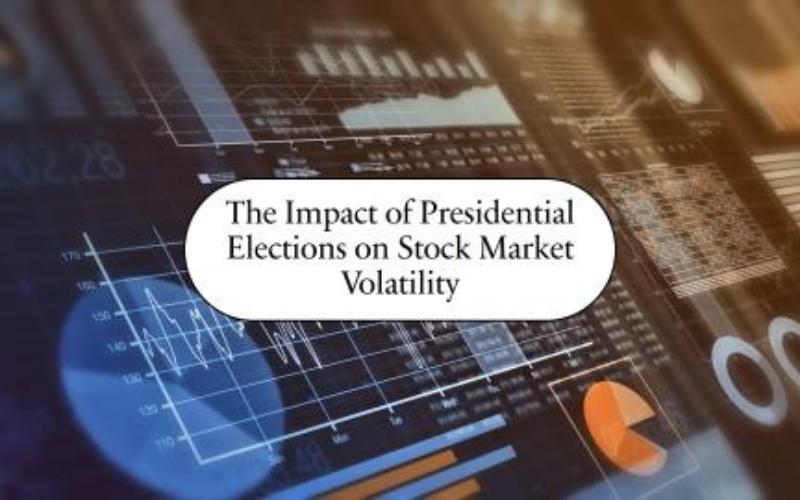The U.S. presidential election cycle is known for stirring stock market volatility as investors anticipate policy shifts that impact economic stability. Historically, election years witness heightened market fluctuations, driven by candidate policies around interest rates, taxes, and regulatory changes.
While election outcomes may not directly change U.S. corporate IT spending, a Trump win could pose challenges due to his stance on immigration, potentially tightening visa policies.
Conversely, a Kamala Harris victory may create a more stable regulatory environment for Indian IT. Market experts see positive growth potential, driven by renewed strength in financial services and increased discretionary spending.
Analysts point out that markets tend to respond favorably when policy direction is clear, while uncertainty often triggers caution.
For instance, tax policies affect corporate earnings and stock prices, leading investors to evaluate potential impacts. Meanwhile, interest rate expectations, particularly around Federal Reserve decisions, can influence broader economic conditions. Notably, markets tend to perform differently depending on whether a new or incumbent candidate takes office, with incumbents often bringing more market stability due to predictable policy continuity.
While election results alone don’t determine long-term market performance, they shape short-term investor sentiment and risk-taking, as seen historically with candidate-driven market responses.
Key Market Updates in October 2024
October 2024 has proven to be a pivotal month in global financial markets, with a mix of geopolitical events, economic reports, and policy changes driving investor sentiment. This month, investors have been highly reactive to the upcoming U.S. presidential election, ongoing inflation data, and fluctuating energy prices. Additionally, global concerns over economic slowdowns in regions like China and Europe are influencing the performance of both developed and emerging markets.
Key updates include
Election-Driven Market Volatility: With the U.S. election around the corner, markets are highly sensitive to shifts in candidate polling and policy projections, especially concerning fiscal spending, taxation, and regulatory environments.
Interest Rate Speculations: Central banks, particularly the U.S. Federal Reserve, are closely watched as inflation remains a critical issue. The possibility of further rate hikes or cuts has led to heightened market activity.
Sector-Wise Movements: Certain sectors like energy and healthcare are experiencing unique pressures and growth, impacted by commodity price volatility and potential policy changes.
Stocks and Bonds Amid Election Uncertainty
The 2024 U.S. election cycle has stirred heightened uncertainty across stock and bond markets. As candidates propose varying fiscal policies, especially on corporate tax rates, healthcare reforms, and climate initiatives, investors are recalibrating their portfolios. Historically, markets tend to favor stability, but the potential for major policy shifts has led to increased market volatility.
Stock Market Response: Equities are showing mixed performances, with defensive stocks, such as utilities and consumer staples, seeing increased interest. Conversely, tech and energy sectors face more volatility, given their sensitivity to policy changes.
Bond Market Trends: Bonds are a focal point as investors balance between seeking safety and adjusting to potential rate changes. Treasury yields have fluctuated significantly in October, with investors wary of possible shifts in government spending and debt policies under a new administration.
Investment Strategies Amid Uncertainty: With uncertainty high, investors are favoring a diversified approach. Many portfolio managers are opting for a “barbell strategy,” balancing high-growth stocks with high-yield bonds to hedge against volatility.
Oil Price Surge and Its Global Impact
Oil prices have spiked this October due to a combination of supply constraints and rising global demand. Factors contributing to the surge include ongoing geopolitical tensions in oil-producing regions, the reluctance of OPEC+ countries to increase production significantly, and disruptions due to natural disasters. The implications of these price hikes are far-reaching, affecting everything from inflation rates to the global supply chain.
Inflation Pressures: Rising oil prices contribute directly to inflation, affecting transportation, logistics, and production costs across sectors.
Impact on Emerging Markets: Many emerging markets heavily reliant on oil imports are experiencing economic strain, leading to potential currency devaluation and trade deficits.
Energy Transition and Renewables: The oil price surge has intensified discussions around renewable energy investments, as countries seek to reduce their dependency on volatile oil markets.
Gold: Safe Haven During Market Jitters
Amid October’s financial uncertainty, gold has continued its role as a “safe haven” asset. Historically, investors turn to gold during volatile periods due to its stability and intrinsic value. October has been no exception, with gold prices seeing a steady increase as economic and political anxieties rise.
Gold Price Trends: In October 2024, gold prices have seen upward pressure, reflecting concerns over inflation and geopolitical risks.
Investment Patterns: Gold-backed ETFs have observed increased inflows, signaling growing interest in gold as a long-term asset class. Additionally, central banks, particularly in emerging markets, have continued to add gold to their reserves.
Outlook for Gold: Given the uncertainty surrounding the U.S. election and global inflation, gold’s upward trajectory is likely to persist, making it an attractive choice for investors seeking a stable asset.
Dollar Strength and Currency Market Reactions
The U.S. dollar has shown resilience in October 2024, bolstered by the Federal Reserve’s monetary policy stance and the global demand for safe assets amid economic uncertainties. However, this strength has produced varying effects across currency markets, influencing everything from trade balances to inflation rates in both developed and developing countries.
Dollar’s Impact on Global Trade: A stronger dollar can negatively impact U.S. exports, making them more expensive for foreign buyers while also affecting economies with high levels of dollar-denominated debt.
Emerging Market Pressures: Many emerging markets are feeling the strain of a strong dollar, as it leads to higher debt servicing costs and potential inflation in import-heavy economies.
Currency Market Trends: With volatility in the forex markets, other major currencies like the euro and yen have seen fluctuations, often reacting to both domestic policies and dollar-driven shifts.



